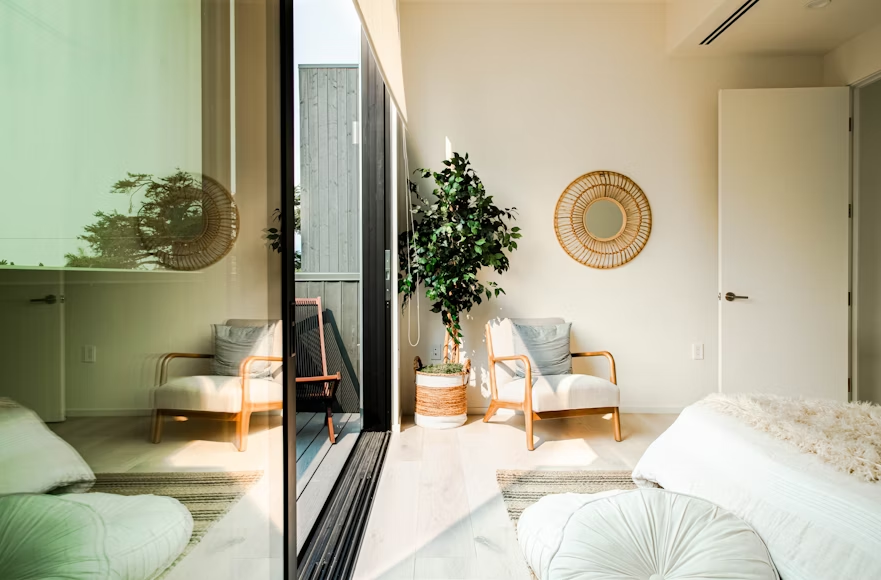Beyond the Backyard: How Sunrooms Can Enhance Biodiversity in Dense Urban Environments
You may see sunrooms as cozy nooks for a morning coffee or midday break, but in dense urban environments, they can be something more. Microecosystems can contribute meaningfully to urban biodiversity. By turning sunrooms into plant-filled sanctuaries, city dwellers can help restore balance to struggling urban biomes while creating a space for personal well-being.
Rethinking Sunrooms as Biodiversity Boosters
A well-designed sunroom can do much more than house a few succulents. With intention, it can be a space where nature thrives. By incorporating native plants, encouraging pollinators, and mimicking natural habitats, these enclosed gardens offer refuge to wildlife that has lost ground to pavement and steel.
The benefits don’t stop there. Rooms with sunlight can improve indoor air quality, boost mood through natural light exposure, and lower energy costs by capturing solar warmth in cooler months. Daylight can also increase productivity by 18%, so working from your sunroom could give your workday a natural boost. Whether you use your sunroom to relax, work, or garden, it can simultaneously be a hub for biodiversity in cities.
Why Urban Biodiversity Matters
Cities aren’t ecological dead zones. They’re filled with life, sometimes in surprising places. From birds nesting under balconies to bees visiting rooftop gardens, biodiversity in cities is vital.
Healthy city biodiversity can:
> Reduce the urban heat island effect.
> Support local food webs and pollination.
> Provide psychological benefits to residents.
> Increase a city’s resilience to climate stress.
No matter how small, urban green spaces create critical connections to wildlife. Your sunroom can be part of the network.
How to Build a Biodiverse Sunroom

1. Choose Native and Pollinator-Friendly Plants
Start with plant life. Native species are key because they’ve evolved to support the insects and birds living in your area. They also tend to be hardier and more drought-tolerant, which is ideal for indoor-outdoor conditions.
Consider mixing leafy greens with flowering varieties to support photosynthesis and pollination. A few strategic choices can transform your sunroom into a year-round food source for butterflies, hummingbirds, and bees.
Some of the best options include:
Hibiscus: Large, bright blooms attract butterflies and hummingbirds.
Orchids: While not always native, many species offer nectar to attract tiny pollinators and bring exotic beauty to your space.
Snake plant: This plant is low-maintenance and excellent for air purification.
Spider plant: It’s hardy, air-purifying and produces small white flowers to draw pollinators to open windows.
Jade plant: This succulent blooms in the right conditions, offering nectar for insects.
Begonias: Their long flowering season and vibrant colors attract pollinators, especially when placed near a window or open vent.
Aloe vera: This plant is great for indoor biodiversity, especially when it flowers.
Boston fern: It adds humidity, improves air quality, and offers shelter for small insects and other beneficial critters.
2. Provide Water and Shelter
Every ecosystem needs water and shelter. Even a shallow bowl of water can help thirsty pollinators, while a small log or pile of bark creates hiding spaces for helpful insects.
If your sunroom has space, add features like:
> A small tabletop fountain or pebble dish for hydration.
> Insect hotels to attract solitary bees and ladybugs.
> Small perches or hanging sticks for resting birds.
3. Balance Light and Shade
It’s called a sunroom for a reason, but too much direct sunlight can actually limit your biodiversity goals. Some native plants thrive in dappled light. Certain insects and birds also prefer shaded or semi-protected areas.
Use taller plants or hanging baskets to create layers of light and shade. Install blinds or sheer curtains if needed to diffuse harsh midday rays. The goal is to mimic a natural forest edge — bright but balanced.
4. Bridge the Indoors and Outdoors
What’s inside your sunroom should connect with what’s outside. If your building has a rooftop or courtyard garden, use the sunroom as a gateway between your home and that space. Even window boxes or vines trailing down a fire escape can create a corridor for insects and birds.
The more continuous and varied these green pockets are, the better they support movement and survival within the larger urban biomes around you. Sunrooms can be vital stepping stones for species navigating fragmented city landscapes.
5. Use Eco-Friendly Materials
When furnishing your sunroom, opt for reclaimed wood, bamboo or recycled glass. Avoid pressure-treated lumber or chemical-heavy treatments, as they can harm human health and the environment.
6. Install Proper Ventilation
Airflow is essential for your comfort and for the health of your plants and insects. Screened vents or open windows can allow pollinators to enter safely while keeping the air fresh.
7. Add a Composting Corner or Vermicompost Bin
You can repurpose food scraps and plant waste right in your sunroom. A small, odor-controlled compost or worm bin creates natural fertilizer and introduces microorganisms to enrich the ecosystem.
8. Consider Multi-Season Use
Use thermal curtains or double-glazed glass to regulate temperature, allowing the space to support life throughout the year. You can even grow winter-hardy greens like kale, chard, and herbs during colder months.
9. Monitor and Record Wildlife Activity
Create a simple observation journal to track which birds, bees and bugs visit your space. Over time, you’ll learn which features attract the most biodiversity and best support your local wildlife.
The Bigger Picture
City dwellers may feel powerless in the face of environmental decline, but even modest actions can make a difference. A single sunroom full of life shows you value your city’s biodiversity and are willing to share space with other species.
